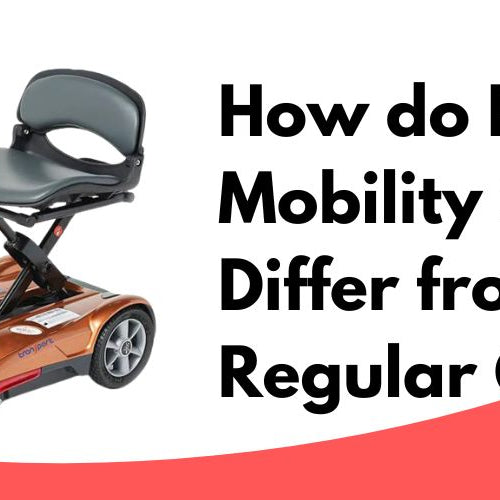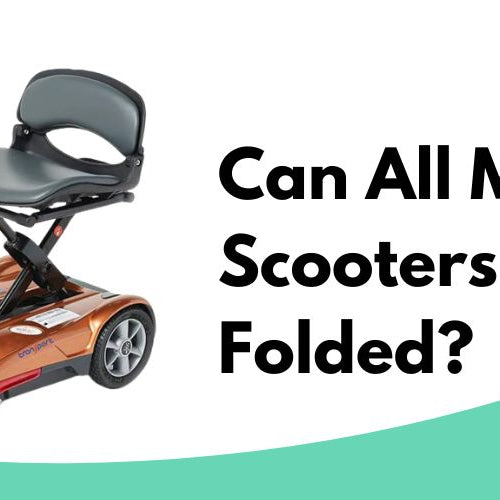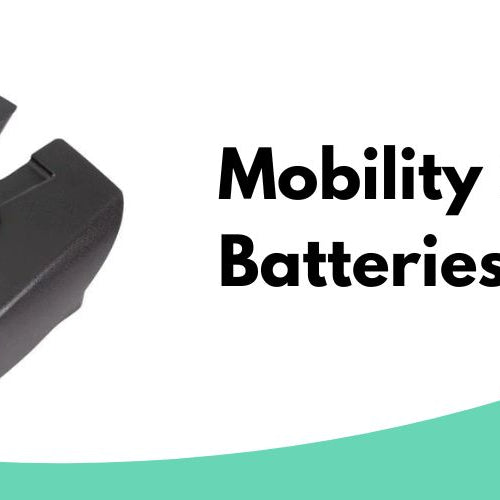Traveling with a rollator/walker can raise concerns for individuals who rely on these mobility devices to comfortably navigate airports and unfamiliar destinations. One common question that arises is whether rollators are allowed on planes. Fortunately, the answer to this is generally positive, as most airlines accommodate rollators on board without issue.
Air travel with a rollator can indeed be a seamless experience, especially with the lighter, foldable models that are easy for airlines to handle. However, larger, bulkier models may have to be checked in as luggage. It is essential to be aware of the specific airline policies and request any special assistance needed for a smoother boarding process, ensuring a hassle-free journey with your rollator.
In this article, we will dive into the various factors to consider when planning air travel with a rollator, along with helpful tips to further enhance your travel experience.
Rollator Regulations on Airplanes
Airline Policies
Most airlines allow passengers to bring rollators on planes as they are classified as "assistive devices." These devices are specifically designed to help individuals with disabilities, and as a result, airlines have special accommodations in place for their transportation. It is important to note that rules and requirements may vary between airlines, so it is recommended to contact your airline ahead of time to ensure smooth travel with your rollator.
Security Procedures
At the airport, rollators are subject to security checks just like other items. Passengers should be prepared to:
- Collapse and fold the rollator, if possible, for the X-ray machine
- Allow security personnel to inspect the device, if necessary
- Be aware that additional screening may be conducted on a case-by-case basis
For smooth passage through security, arrive early to accommodate any extra time required for these procedures.
Special Assistance
Airports and airlines usually offer special assistance for passengers traveling with rollators. This may include:
- Early boarding to allow extra time for device setup and seating
- Assistance with navigating the airport, such as wheelchair service
- Special boarding entrances for passengers with mobility devices
To ensure proper accommodations, it is recommended to notify the airline of your rollator and any special assistance needed at the time of booking or in advance of your departure date.
Packing and Stowing Rollators
Hold Luggage
When flying with a rollator or walker, it is generally best to avoid packing these mobility aids in your hold luggage. Instead, walk with the rollator to the check-in counter, and inform the staff that you would like to bring your rollator or mobility aid into the airport. The airline staff should then attach a baggage tag to your rollator, which you can then bring through security control.
Overhead Compartments
Rollators and walkers usually do not fit into the overhead compartments of airplanes due to their size and shape. These compartments are designed for smaller carry-on luggage and personal items. It is advisable to fold and store your rollator in a designated area for mobility aids or as instructed by the airline crew.
Gate Checked Rollators
For those who need their rollator or walker until boarding, gate checking is an excellent option. This allows you to use your mobility aid within the airport and up to the gate, where it will then be taken from you before boarding the aircraft. Upon arrival at your destination, the rollator, walker, or wheelchair will be returned to you at the aircraft door or, in some cases, the baggage claim area.
To ensure a smooth process:
- Notify the airline in advance that you will be traveling with a rollator, walker, or wheelchair, and request assistance if needed.
- Place a clearly visible identification tag with your contact information on your mobility aid.
- Inform the gate agent that you will gate check your rollator or walker, and they will provide you with a gate check ticket.
By following these guidelines, you will have a stress-free experience when traveling with your rollator, walker, or wheelchair, ensuring you have the assistance and accommodation necessary for a comfortable journey.
Mobility Aids and Their Usage in Air Travel
Walkers and Canes
Walkers and canes are essential mobility aids for many people. Airlines generally permit passengers to bring walkers and canes onboard flights. These devices are stowed in the overhead compartments or under the seat in front of the passenger.
Wheelchair Assistance
Air travel with wheelchairs and other mobility aids is feasible for individuals who rely on these devices for daily living. You can remain in your wheelchair for most of the TSA security process, and request a manual pat-down if you cannot walk through the detectors. Flight attendants can provide assistance in transfers between your seat and an onboard wheelchair. This service is helpful for passengers traveling outside the U.S., but it's essential to request special assistance in advance.
When it comes to stowing your wheelchair, airlines may not be able to accommodate it in the passenger cabin. As a solution, the device (with batteries removed) may travel as checked baggage in the cargo compartment. If the wheelchair cannot be stowed upright or has lithium-ion batteries, airlines may need to remove the battery and package it separately.
Scooters and Mobility Scooters
Scooters and mobility scooters are other helpful devices for seniors and people with limited mobility. Similar to wheelchairs, these devices can be transported as checked baggage. It is crucial to inform the airline in advance if you plan to bring a scooter or mobility scooter onboard.
In summary, air travel with mobility aids like walkers, canes, wheelchairs, and scooters is permissible, as long as passengers plan ahead, follow the airline and TSA guidelines, and communicate their needs with airline staff.
Travel Insurance and Pre-Existing Conditions
Coverage for Mobility Equipment
Travel insurance can provide coverage for mobility equipment such as rollators. Airlines typically allow passengers to bring their walkers or rollators on board the aircraft. If damaged during travel, travel insurance policies may offer compensation for replacement or repair costs. It is essential to check the specific terms and conditions of your travel insurance to ensure your mobility equipment is covered.
Medications and Travel Supplies
When traveling with a pre-existing condition, it's important to have adequate coverage for your medications and travel supplies. A comprehensive travel insurance plan may include coverage for medications such as insulin and accessories like insulin travel cases. This coverage ensures that if your medication is lost, stolen, or damaged during your trip, you'll receive reimbursement or assistance in obtaining replacements.
Travelers should also be aware of the pre-existing condition exclusion waiver, which can be included in some travel insurance plans. To qualify for such a waiver, policyholders must meet certain requirements, such as purchasing the policy within a specified timeframe and being medically fit to travel.
To make the most of your travel insurance policy and ensure coverage for pre-existing conditions, keep the following tips in mind:
- Purchase travel insurance as soon as you book your trip to meet waiver requirements.
- Research and compare different policies to find one that best suits your needs.
- Review the terms and conditions to understand coverage limits and exclusions.
- Take note of any specific requirements, such as buying insurance within a certain timeframe, to benefit from pre-existing condition coverage or waivers.
- Carry a copy of your policy and emergency contact numbers with you on your trip.
By following these guidelines, you can help ensure that your pre-existing medical conditions, medications, and mobility equipment are adequately covered by your travel insurance policy.
Accessible Travel Destinations
Wheelchair Accessible Beaches
Spain and Greece are known for their beautiful and accessible beaches. Many of these beaches have special accommodations and features tailored for wheelchair users. For example:
- Ramps and boardwalks for easy access to the sand
- Beach wheelchairs available for rent
- Accessible facilities, such as restrooms and showers
Some popular wheelchair accessible beaches in Spain include Playa de Muro in Mallorca and Playa de Las Canteras in Gran Canaria. In Greece, examples of such beaches are Elafonisi Beach in Crete and Vouliagmeni Beach in Athens.
Rail Travel in Europe
European countries feature some of the best and most accommodating rail travel experiences for individuals with mobility devices. Many trains are equipped with:
- Dedicated spots for wheelchairs and rollator users
- Lifts and ramps for easy boarding
- Accessible restrooms
When planning a trip, research accessibility in advance and book assistance services through the respective rail operators. For instance, Eurostar, TGV, and Deutsche Bahn all offer assistance services for travelers with disabilities.
Fremont Street
Fremont Street in Las Vegas, Nevada, is an accessible and sensory-friendly destination for families with autistic children. Notable attractions include:
- The Viva Vision light show with more than 12 million LED lights
- The SlotZilla zip line experience
- Accessibility features, such as ramps and a network of free wheelchairs
With its wide pathways and accommodating establishments, Fremont Street is the ideal choice for an entertaining, hassle-free, and family-friendly experience.
Additional Considerations for Disabled Travelers
High-Quality Rollators and Accessories
Lowest price rollators can be found at Mobility Nest.
For disabled travelers who need assistance with mobility, high-quality rollators, or rolling walkers, can make a significant difference. Lightweight rollators are specifically designed for easy transportation, including on airplanes. They usually feature adjustable back support, making the journey more comfortable for the user. When selecting a rollator for air travel, consider these attributes:
- Lightweight construction
- Foldability for easy storage
- Adjustable back support for comfort
Reservation Tips and Recommendations
When booking a flight, disabled travelers should be proactive in informing the airline about their specific needs. To ensure a smooth travel experience, follow these recommendations:
- Contact the airline's disability desk or their customer service at least 48 hours before the flight.
- Request a priority seat or a seat suitable for passengers with disabilities at least 24 hours in advance.
- Inform the airline if you need an escort to assist you throughout your travel journey.
Priority and Disability Support Services
Airports and airlines offer various priority and disability support services to make air travel more accessible for disabled people. These services include:
- Pre-boarding: Disabled travelers can board the airplane before other passengers, allowing them extra time to settle in.
- Mobility device assistance: Airlines and airports have systems in place to accommodate travelers with mobility limitations, such as rollators and wheelchairs.
- TSA security procedures: It's helpful to be aware of special procedures in place for disabled travelers when going through airport security.
By considering these factors, disabled travelers can better prepare for their flight and ensure an enjoyable and comfortable journey.
Transporting Assistive Devices During Air Travel
When traveling by air, it's essential to know how to transport assistive devices such as crutches, walking sticks, footrests, and other mobility equipment. This section provides an overview of requirements and tips for transporting these items on airplanes.
Crutches and Walking Sticks
Crutches and walking sticks are generally allowed on planes, and airlines usually permit them in both carry-on and checked luggage. It's essential to check with your specific airline for their policies and requirements regarding these items. To ensure a smooth boarding process, inform airline staff at the check-in counter or gate about your need for these devices on board.
Footrests and Wheelchair Components
Footrests and other wheelchair components can be transported on planes without much hassle. Air carriers often require these items to be removed from the wheelchair before checking in the equipment. Passengers should securely package and label these items to avoid damage or loss during transit. It's crucial to notify the airline of your need for these components in advance, as specific instructions or accommodations may apply.
Travel Bags and Strollers
For passengers traveling with travel bags and strollers, airlines usually allow one checked item in addition to your standard baggage allowance. Ensure that your travel bag or stroller meets the airline's size and weight requirements for checked luggage. When checking in a stroller, fold and secure it properly to prevent damage.
-
Crutches and Walking Sticks: Allowed in both carry-on and checked luggage; inform airline staff at check-in counter or gate.
-
Footrests and Wheelchair Components: May need to be removed from wheelchair; securely package and label these items; notify airline in advance.
-
Travel Bags and Strollers: One checked item allowed in addition to standard baggage allowance; ensure it meets size and weight requirements; fold and secure stroller properly.
In conclusion, understanding the requirements and guidelines for transporting assistive devices like crutches, walking sticks, footrests, and strollers during air travel is essential for a smooth and hassle-free journey.






Leave a comment